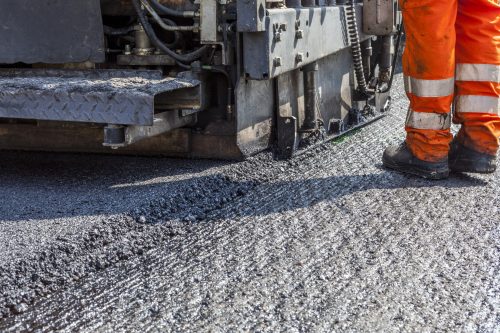The Ultimate Guide To A1 Professional Asphalt & Sealing Llc
The Ultimate Guide To A1 Professional Asphalt & Sealing Llc
Blog Article
The Single Strategy To Use For A1 Professional Asphalt & Sealing Llc
Table of ContentsA Biased View of A1 Professional Asphalt & Sealing Llc4 Simple Techniques For A1 Professional Asphalt & Sealing LlcOur A1 Professional Asphalt & Sealing Llc StatementsThe 2-Minute Rule for A1 Professional Asphalt & Sealing LlcNot known Incorrect Statements About A1 Professional Asphalt & Sealing Llc

The oil in a vehicle engine is not just oil. It includes a selection of additives to boost the car's performance. These consist of polymers, viscosity modifiers, heat stabilizers, extra lubricants, and put on ingredients. The REOB includes all the additives that were in the waste oil along with the wear metals from the engine (primarily iron and copper).
By making numerous blends making use of different REOB samples and different asphalt binders, the variants mainly can be balanced out. Several States provided samples of known REOB composition to TFHRC scientists, who analyzed the examples to contrast the percent of added (known) REOB to the discovered (checked) quantity. The evaluations showed a comparable percent of included and located REOB.
A1 Professional Asphalt & Sealing Llc Things To Know Before You Get This
None of those States understood that the asphalt they were getting included REOB. One State insisted its examples had no REOB - https://www.webtoolhub.com/profile.aspx?user=42388970.
Of the 1,532 samples examined, 12 percent consisted of REOB, and some included considerably high degrees of it at 1020 percent. The highest degree was 34 percent in a sample from Texas, which TxDOT had actually made use of in a patching substance. This testing also revealed the visibility of phosphoric acid in 11 percent of the examples, and 2 percent had ground tire rubber.
2 years ago at TRB's yearly meeting, the Federal researchers held an REOB workshop and offered the findings of their lab evaluations to a standing room-only group. Although some agencies do not specifically outlaw REOB, they do impose physical tests that prevent its useeffectively a restriction. asphalt sealcoating in st louis. Others do not prohibit it by spec, however have arrangements with asphalt suppliers to prevent making use of REOB
Some Known Incorrect Statements About A1 Professional Asphalt & Sealing Llc
Ohio and Texas restriction degrees to less than 5 percent of the asphalt. To develop a dependable examination technique that all States can utilize, the TFHRC researchers set up a round-robin test plan.
In total, the researchers prepared and delivered 720 blends. The participants are checking the examples individually utilizing the guidelines provided by the TFHRC researchers. The round-robin screening is nearly completed, and TFHRC remains in the process of collecting the results. The output will be a suggested AASHTO examination technique important site that any State can adopt and use (a1 asphalt).
The sidewalk with REOB, which lies 0.6 mile (1 kilometer) from the sidewalk without REOB, has similar subgrade, traffic thickness, and climate. Nonetheless, the sector of Highway655 with 5 to 10 percent REOB showed significant splitting. In this instance, the presence of REOB was the identified reason of splitting at a low temperature levels.
"In our experience in Canada, even tiny quantities of 23 percent can be an issue." Similarly, an area of test sidewalk in Minnesota (MN1-4) discovered to contain REOB likewise split too soon. The sidewalk done well for the very first 3 to 4 years, yet then started to break. This pavement is additionally based on reduced temperature levels.
A1 Professional Asphalt & Sealing Llc Fundamentals Explained
The tests were not comprehensive, but they showed that at degrees of 6 percent or even more, the tensile strength of the asphalt dropped significantly. At a level of 3.5 percent REOB, the variant in the physical test approaches was more than the effect of REOB. In truth, it was difficult for researchers to analyze whether REOB existed.

One binder criterion taken into consideration is the difference between the low temperature critical requirements temperature level for tightness (S) in the flexing beam rheometer and the bending beam rheometer creep incline (m-value) noted as Tcritical. 2 independent study teams, one from AASHTO and the various other from the Asphalt Institute, wrapped up that even more study is required on the usage of REOB in asphalt.
Previously, all asphalt testing gauged design properties such as rigidity. These tests do disappoint what materials had been contributed to the asphalt. One example received throughout the TFHRC research had a really unusual evaluation. The sample had the adhering to examination outcomes: Superpave PG 64-28 with a heat grade of 67.3 Tcritical on the flexing beam rheometer was 6.7 degrees Celsius.

A1 Professional Asphalt & Sealing Llc for Beginners
These outcomes demonstrate there are weaknesses in the standard engineering testing procedures that might be made use of. The producer may have a financial benefit and the product passes all the standardized examinations, but the product might not be helpful to making sure lasting performance. To resolve this problem and the expansion of brand-new asphalt additives and extenders, TFHRC is starting a research program to utilize handheld spectroscopic tools, x-ray fluorescence spectroscopy, and Fourier transform infrared spectroscopy to enable evaluations to be carried out in the field instead of having to take examples back to the laboratory.
Report this page